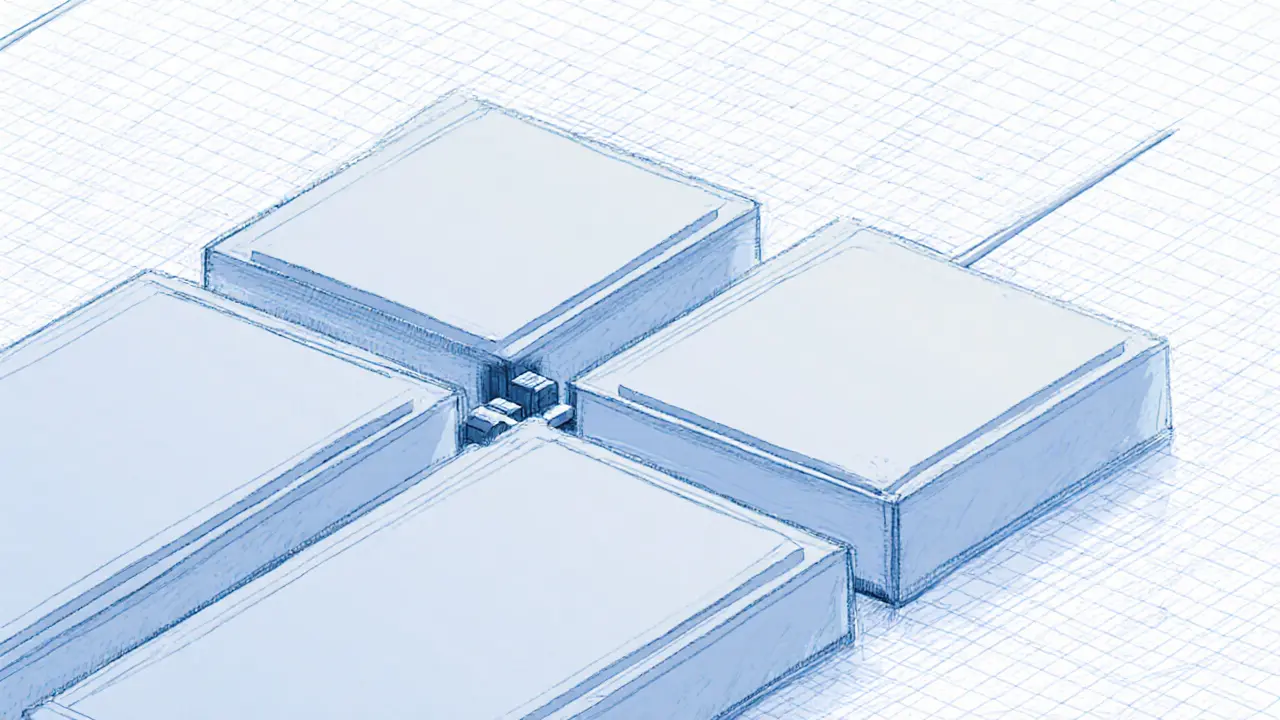Blockchain Sharding Calculator
Sharding Impact Analysis
Calculation: Total TPS = Number of Shards × TPS per Shard
Shard Efficiency:
Shard
Independent processing unit
Cross-Shard
Communication protocol
Security
Consensus per shard
Throughput
Parallel transaction processing
Quick Summary
- Blockchain sharding splits a chain into smaller pieces called shards, letting them process transactions in parallel.
- Each shard runs its own consensus, so nodes only store data for the shards they serve.
- Cross‑shard communication protocols keep the whole network consistent.
- Major projects like Ethereum, Cardano, NEAR and Polkadot are already using or testing sharding.
- Sharding boosts throughput dramatically, but adds complexity around security and data availability.
What Is Sharding in Blockchain?
Sharding is a horizontal scaling technique that partitions a blockchain into multiple mini‑chains called shards. Instead of every validator keeping a full copy of the entire ledger, each validator works on just one slice. The idea comes from classic database partitioning, where large tables are broken into smaller, more manageable pieces.
By spreading the workload, a sharded network can handle many more transactions per second while keeping hardware requirements low. Think of it as adding extra lanes to a highway-more cars can travel at the same time without causing a traffic jam.
How Sharding Works: Core Mechanics
Sharding isn’t a single feature; it’s a set of moving parts that need to sync up. The process typically follows these steps:
- **Shard creation** - The main chain is divided into a predefined number of shards. The number can be static or adjusted as demand grows.
- **Transaction routing** - When a user sends a transaction, the protocol determines which shard holds the relevant account or contract state and directs the payload there.
- **In‑shard consensus** - Validators assigned to a shard run a consensus algorithm (often Proof‑of‑Stake) to order and confirm transactions.
- **Cross‑shard communication** - If a transaction involves data from multiple shards, special proof‑based messages ensure the information is consistent across the network.
- **Data availability** - Validators publish proofs that the shard’s data is accessible, preventing anyone from hiding or tampering with blocks.
All these steps happen in parallel, which is why sharding can raise throughput from a few dozen to thousands of transactions per second in practice.
Key Components Explained
Proof‑of‑Stake is a consensus model where validators lock up tokens as collateral to earn the right to propose and attest to blocks. In many sharded designs, each shard runs its own PoS instance, letting validators specialize without the burden of the entire chain.
Beacon chain is the coordination layer that tracks validator sets and randomness for shard assignment. Ethereum’s upcoming sharding design uses a Beacon chain to organize dozens of shards, making sure they stay in sync.
Cross‑shard communication relies on cryptographic proofs. When a transaction on Shard A needs data from Shard B, Shard B produces a proof of the needed state, which Shard A verifies before finalizing the transaction. This step is the most challenging part because it must be fast and secure.
Data availability proofs, often built on erasure coding or Merkle trees, let any participant check that a shard’s block data is fully published. If a validator withholds data, the proof fails and the network can punish the offender.

Benefits of Sharding Over Other Scaling Solutions
Layer‑2 rollups sit on top of a single chain, bundling many transactions into one. Sharding, by contrast, rewrites the base layer so the work is truly parallel. The main advantages are:
- **Higher raw throughput** - Multiple shards process transactions simultaneously.
- **Lower entry barriers** - Validators only need to store a fraction of the total data.
- **Built‑in security** - Because each shard still runs its own consensus, security isn’t delegated to an external system.
- **Future‑proofing** - As demand spikes, new shards can be added without overhauling the whole protocol.
Challenges and Trade‑offs
Sharding isn’t a silver bullet. The biggest hurdles are:
- **Cross‑shard complexity** - Coordinating state changes across shards adds latency and can open attack vectors.
- **Security fragmentation** - If a shard gets too few validators, it could become easier to attack. Random validator assignment helps, but the risk remains.
- **Implementation difficulty** - Designing robust data‑availability proofs and consensus sync mechanisms requires deep expertise.
- **Network upgrades** - Existing chains must undergo major protocol changes to adopt sharding, which can be politically and technically risky.
Real‑World Implementations
| Network | Sharding Type | Consensus | Throughput Gain | Status (2025) |
|---|---|---|---|---|
| Ethereum | Beacon‑chain coordinated shards | Proof‑of‑Stake (Casper) | 10‑30× current rate | Phase1 rollout, shards live on testnet |
| Cardano | Hydra heads (state channels) + shard‑like lanes | Ouroboros‑Praos PoS | Up to 1M TPS (theoretical) | Hydra pilot in production |
| NEAR Protocol | Nightshade adaptive sharding | Dynamic PoS | ~100K TPS on mainnet | Fully live, stable |
| Polkadot | Parachains (independent shards) | Nominated PoS (NPoS) | Varies per parachain, up to 1M TPS total | Live, dozens of parachains |
These projects illustrate different flavors of sharding: fixed‑size shards (Ethereum), adaptive shard counts (NEAR), and independent parallel chains linked by a relay (Polkadot). All aim to boost transaction capacity while keeping decentralization intact.
Future Outlook
Ethereum’s full sharding launch is expected by 2026, and its success will set a benchmark for the rest of the industry. If the Beacon chain can securely manage dozens of shards, developers will likely build more complex decentralized applications that need high throughput, such as multiplayer games, real‑time finance, and large‑scale IoT data feeds.
Beyond 2025, research is exploring “elastic” sharding where shards can split or merge on‑the‑fly based on demand, and where cross‑shard communication uses zero‑knowledge proofs to reduce latency further. Companies like Rapid Innovation (mentioned in the source material) are already offering consultancy to help enterprises integrate sharding into private‑ledger solutions.
In short, sharding is poised to become a core building block for any blockchain that wants to serve millions of users without sacrificing security.
Frequently Asked Questions
How does sharding differ from layer‑2 solutions?
Layer‑2 solutions sit on top of a single chain and bundle transactions before they hit the base layer. Sharding rewrites the base layer itself, splitting the ledger into multiple parallel pieces. In practice, sharding can achieve higher raw throughput because the work isn’t just batched-it’s truly concurrent.
Can a single validator participate in multiple shards?
Yes. Protocols usually assign validators to shards randomly each epoch, so a validator may serve different shards over time. This rotation improves security by preventing any shard from being dominated by a fixed set of actors.
What is a cross‑shard transaction?
It’s a transaction that reads or writes data stored on more than one shard. The sending shard creates a proof of the needed state from the other shard, verifies it, and then finalizes the action. This process adds latency but preserves consistency.
Is sharding safe for DeFi applications?
Safety depends on how many validators protect each shard and how robust the cross‑shard proofs are. Leading networks run thousands of validators per shard and use cryptographic data‑availability proofs, making the risk comparable to non‑sharded PoS chains.
When will Ethereum’s sharding be fully live?
The roadmap targets a full‑scale implementation in 2026, after extensive testing on testnets throughout 2025. Early beacon‑chain shards are already operational on the public testnet.

